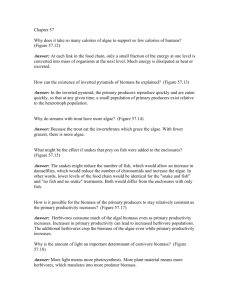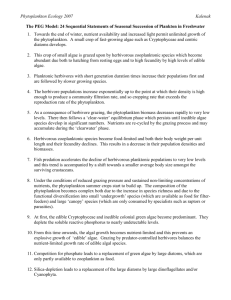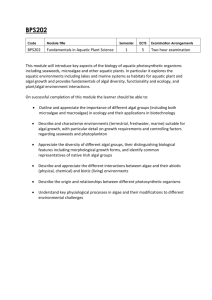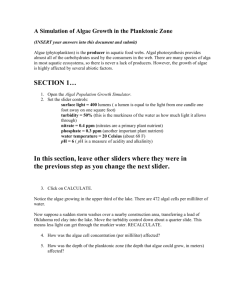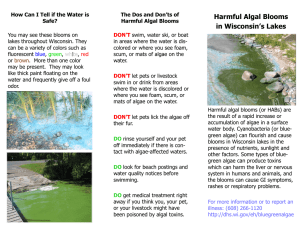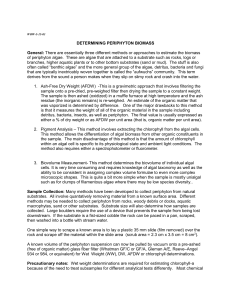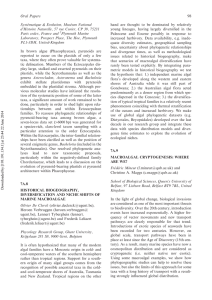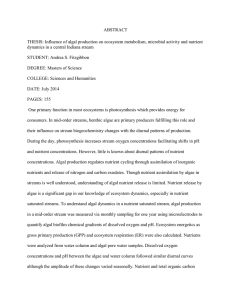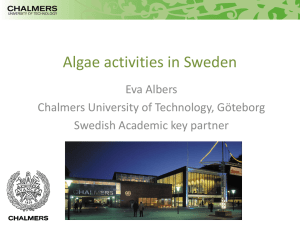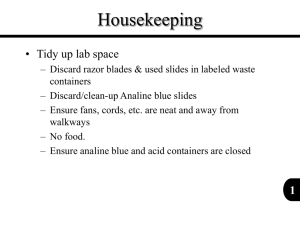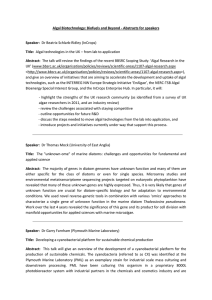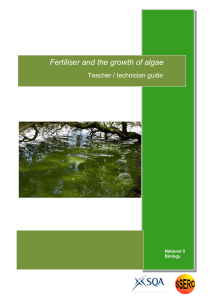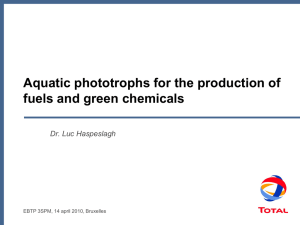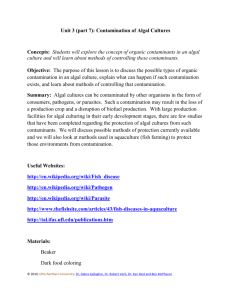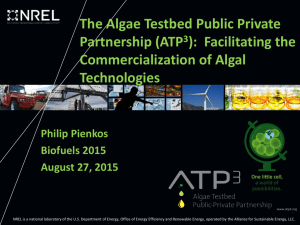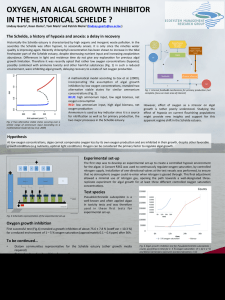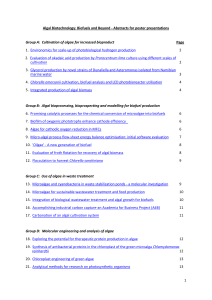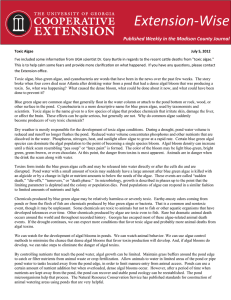Impacts of TiO2 Nanoparticles on Freshwater Food Webs Research
advertisement
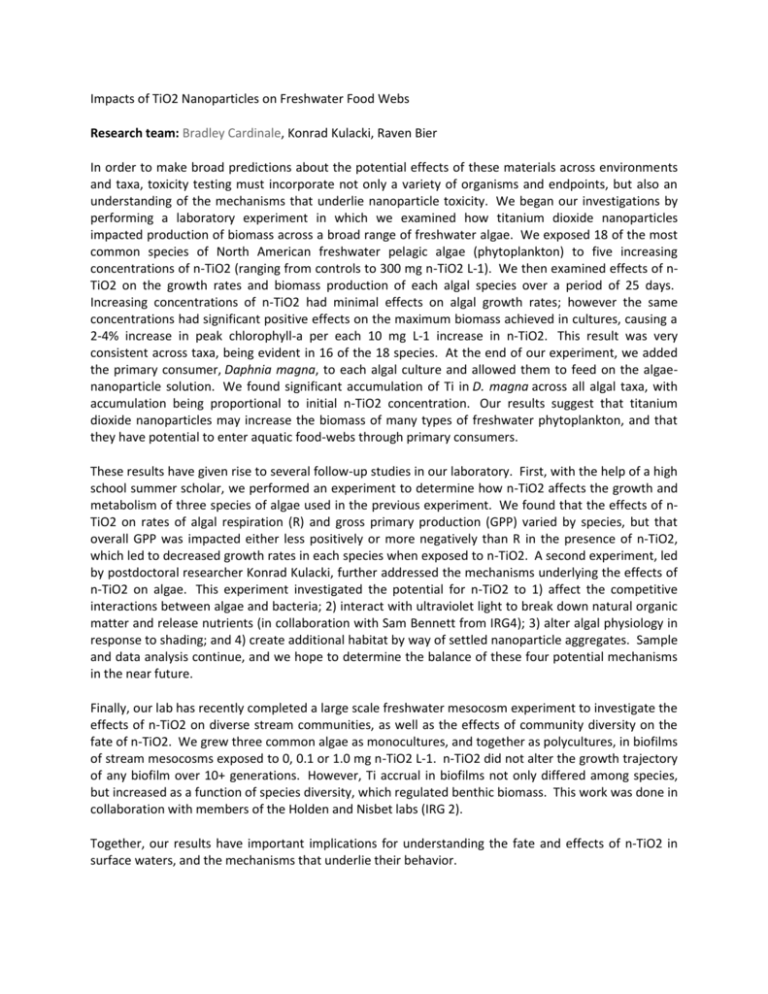
Impacts of TiO2 Nanoparticles on Freshwater Food Webs Research team: Bradley Cardinale, Konrad Kulacki, Raven Bier In order to make broad predictions about the potential effects of these materials across environments and taxa, toxicity testing must incorporate not only a variety of organisms and endpoints, but also an understanding of the mechanisms that underlie nanoparticle toxicity. We began our investigations by performing a laboratory experiment in which we examined how titanium dioxide nanoparticles impacted production of biomass across a broad range of freshwater algae. We exposed 18 of the most common species of North American freshwater pelagic algae (phytoplankton) to five increasing concentrations of n-TiO2 (ranging from controls to 300 mg n-TiO2 L-1). We then examined effects of nTiO2 on the growth rates and biomass production of each algal species over a period of 25 days. Increasing concentrations of n-TiO2 had minimal effects on algal growth rates; however the same concentrations had significant positive effects on the maximum biomass achieved in cultures, causing a 2-4% increase in peak chlorophyll-a per each 10 mg L-1 increase in n-TiO2. This result was very consistent across taxa, being evident in 16 of the 18 species. At the end of our experiment, we added the primary consumer, Daphnia magna, to each algal culture and allowed them to feed on the algaenanoparticle solution. We found significant accumulation of Ti in D. magna across all algal taxa, with accumulation being proportional to initial n-TiO2 concentration. Our results suggest that titanium dioxide nanoparticles may increase the biomass of many types of freshwater phytoplankton, and that they have potential to enter aquatic food-webs through primary consumers. These results have given rise to several follow-up studies in our laboratory. First, with the help of a high school summer scholar, we performed an experiment to determine how n-TiO2 affects the growth and metabolism of three species of algae used in the previous experiment. We found that the effects of nTiO2 on rates of algal respiration (R) and gross primary production (GPP) varied by species, but that overall GPP was impacted either less positively or more negatively than R in the presence of n-TiO2, which led to decreased growth rates in each species when exposed to n-TiO2. A second experiment, led by postdoctoral researcher Konrad Kulacki, further addressed the mechanisms underlying the effects of n-TiO2 on algae. This experiment investigated the potential for n-TiO2 to 1) affect the competitive interactions between algae and bacteria; 2) interact with ultraviolet light to break down natural organic matter and release nutrients (in collaboration with Sam Bennett from IRG4); 3) alter algal physiology in response to shading; and 4) create additional habitat by way of settled nanoparticle aggregates. Sample and data analysis continue, and we hope to determine the balance of these four potential mechanisms in the near future. Finally, our lab has recently completed a large scale freshwater mesocosm experiment to investigate the effects of n-TiO2 on diverse stream communities, as well as the effects of community diversity on the fate of n-TiO2. We grew three common algae as monocultures, and together as polycultures, in biofilms of stream mesocosms exposed to 0, 0.1 or 1.0 mg n-TiO2 L-1. n-TiO2 did not alter the growth trajectory of any biofilm over 10+ generations. However, Ti accrual in biofilms not only differed among species, but increased as a function of species diversity, which regulated benthic biomass. This work was done in collaboration with members of the Holden and Nisbet labs (IRG 2). Together, our results have important implications for understanding the fate and effects of n-TiO2 in surface waters, and the mechanisms that underlie their behavior.


